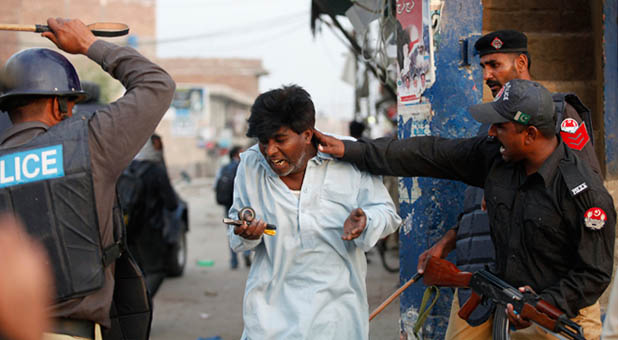Pew Research Report Distorts the Issue of Religious Persecution
Most studies that measure attacks on religion speak about religious persecution. A Pew Research Center article released June 9, based on a Pew study that was published in April, takes a different tack: it provides data on religious groups that have been “harassed or intimidated.”
It does not address the severity or frequency of the harassment, and therefore “the results should not be interpreted as gauging which religious group faces the most harassment or persecution around the world.”
This is an honest description of the study’s goal. But the decision to skirt which religious groups are the most persecuted—and to eschew an account of who is doing the persecution—is a serious omission. It would be like doing a report on crime by focusing on misdemeanors to the neglect of felonies.
The study also fails to define with any precision what it means by “social hostilities;” it cites them as an index of harassment. Other studies do a better job on the subject of religious victimization.
The 2016 Annual Report issued by the U.S. Commission on International Religious Freedom names nine nations as the most egregious violators of religious liberty in the world: they “torture or use cruel, inhuman, or degrading treatment or punishment.” Christians are persecuted in all of them.
Five of the persecuting nations are run by Muslims (Iran, Saudi Arabia, Sudan, Turkmenistan and Uzbekistan); two are Communist dictatorships (China and North Korea); one is Buddhist-run (Burma) and one is a secular tyranny (Eritrea).
We know from many studies of religious persecution that there are some undeniable facts. Here are three of them:
- There is no country in the world run by Christians that persecutes people of faith.
- There is no religious group more persecuted than Christians.
- There is no religious group that persecutes people of faith more than Muslims.
Any study that does not punctuate these facts is minimalizing Christian persecution; it also minimalizes the role played by the victimizers, namely, Muslims and Communists.
The headline to the recent Pew article on the study is also problematic: “Christians Faced Widespread Harassment in 2015, but Mostly in Christian-Majority Countries.”
It is misleading to say that Christians are harassed in mostly Christian-majority nations. It suggests that Christians are persecuting Christians, which is simply not true. Furthermore, the Pew study cites only two nations to back up its claim: Nicaragua and Eritrea. They are poor choices.
Nicaragua is not run by Christians—it is run by atheist left-wing dictators. Eritrea is not run by Christians either. Some studies say the nation is half Muslim and half Christian, while others say it is majority Muslim. No matter, it is not Christians who are doing the persecution.
The headline about Christians being harassed in mostly Christian-majority nations looks even more pompous when we consider an analogy with South Africa. When it was a dictatorship, the South African rulers were white and the persecuted were black. Would it not be misleading to say that blacks were harassed in a black-majority nation?
Open Doors, a Christian entity, has done great work on this subject, though it is curiously not cited as a resource by Pew (it does cite the ADL). This is regrettable given the comprehensiveness of its reporting. Interestingly, it raised the issue about Christians being victimized in Christian-majority nations, providing an authoritative response.
Q: “Some of these countries have large Christian populations, yet they remain on the list. Why is that?”
A: “There are countries on the list which have a rather large Christian population and remain on the list for numerous reasons. In countries like Columbia, Christians face persecution from rebel groups in certain parts of the country. While non-Christians also experience violence from these groups, Christian leaders are specifically targeted because many people have left the rebel groups after coming to Christ. The church is often seen as a threat by these groups because of this and is often attacked.”
There are other anomalies that should be considered. For example, there are nations such as Kenya which have a large Christian majority, yet in those areas that are dominated by Islam, they are persecuted.
Finally, a word about harassment. Many Catholics, as well as others, regard the Obama administration’s HHS mandate forcing Catholic non-profits to pay for abortion-inducing drugs in their healthcare plans as a classic example of government harassment of a religious group. There is no evidence that Pew does.
We have long praised the Pew Research Center for its work. This study did not meet its usual standard of excellence.{eoa}
















































